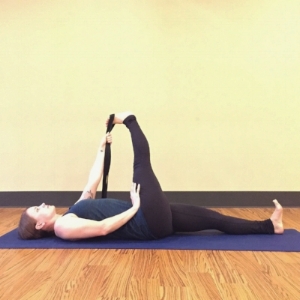Find Your Teacher
In February I stepped foot into Love Story Yoga in the Mission neighborhood of San Francisco to begin my 500-Hour Teacher Training with Jason Crandell. I was nervous, excited, and unsure of what to expect. Fast forward five months and I'm in my final week of training. This experience has given me more than I can express and I'm so happy I made the decision to commit to this training.
It'll take some time for me to unpack everything I've gathered throughout these 300 hours. I've learned a great deal about anatomy, alignment, sequencing, philosophy, assists, and ways to work with injuries. I'll leave this training with a better sense of who I am as a teacher with added confidence in my knowledge and abilities. Most importantly, I'm going to leave this training grateful for my teacher. I feel lucky to have taken Jason's workshop for the first time over five years ago. I'm glad I've stuck with him.
Just as my teaching isn't for all yoga students, Jason's teaching definitely isn't for everyone. Although those of us in his training respect and think very highly of him, Jason never seems to put himself on a pedestal. Without losing the teacher/student dynamic, I have come to feel almost like one of my teacher's peers.
My intention with this post wasn't to inflate Jason's ego (ya'll know he doesn't need that). My intention is to highlight the importance of finding your teacher. Sure you are your greatest teacher... or however the quote goes... but there's incredible value in finding a teacher who can guide you along your path and shine light on aspects of your practice and self that deserve exposure.
Perhaps I'm hyperaware of my respect for my teacher and appreciation for his no-BS approach. In the last few years I've read about countless yoga teachers who have taken advantage of their students. I have some close friends in various cities who have felt broken and lost after their teacher turned on them. A quick Google search will expose you to the dirty little secret of emotional manipulation and improper relationships that can run rampant in the health and wellness world. It just shouldn't be that way.
I appreciate that my teacher wants his students to question him. He doesn't claim to have all the answers. He wants his teachers in training to maintain their individual voice as a teacher even while being bombarded with his content. Although I often take myself too seriously, Jason reminds me every day in training to lighten up. This practice is special and forces many of us to turn the mirror onto the deepest parts of our being, but it's also meant to be joyful and fun.
Oh, that's just me taking this training thing way too seriously.
I'm not claiming that one teacher is best for all students. A handful of teachers might offer you the best combination of what you need in your practice. Jason is my teacher now, but down the road a new teacher might resonate with me. I find incredible value in practicing with teachers who are completely different from Jason. Yoga teachers and non-yoga teachers alike have something to share with this world. It's important to take a step back and learn from all of them.
So, to those of you who practice yoga, I invite you to explore different teachers and different styles. I encourage you to question your teacher and ask yourself why a certain teacher does or doesn't resonate with you. To my teacher friends, take time to reflect upon the teacher you are or what kind of a teacher you want to be. Although it can be a heavy idea, consider the power you hold as a yoga teacher. How do you hope to use that power?
Through Jason and this training I've been inspired to reach out to my fellow yoga teachers and establish a more supportive teaching community. Teaching yoga is not the easiest road to take and through this process I've been reminded I won't go anywhere as a teacher through isolation. I was recently listening to Kathryn Budig and Kate Fagan's podcast Free Cookies and one of their newest episodes hammered home the need for mindful and supportive teachers. Kathryn and Kate interviewed one of the most influential Western yoga teachers, Seane Corn. Seane shared a story about a younger teacher who had reached out to her for advice on teaching. Her interaction with this younger teacher was so inspiring and made me think very critically about how I hold myself as a teacher around my peers and students. I encourage you to check it out.
A little something I like to remind myself of on a daily basis: I might be a yoga teacher, but being a student is my most important role.




















